Shomrim: Jewish Neighborhood Watch
Gene Gallerano
A Private Police Force Grows in Brooklyn
By Gene Gallerano
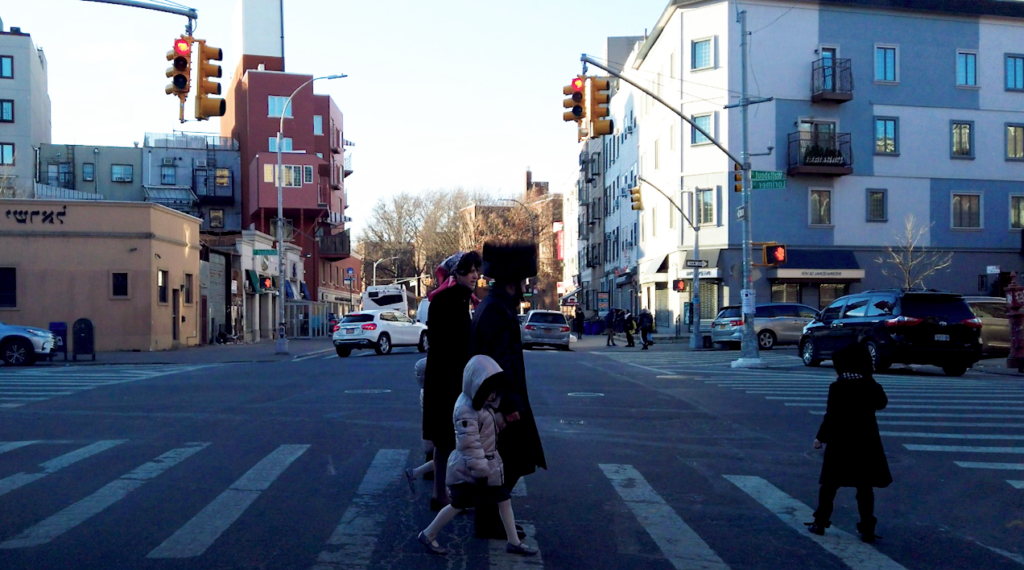
A Hasidic family crosses the street in Williamsburg, Brooklyn.
WILLIAMSBURG– “I’ve lived in this neighborhood for 20 years and have never seen a Shomrim command center,” the man said through a waft of cigarette smoke. Wearing a braided black and green kippah, white dress shirt and black trousers, the Orthodox Jewish man seemed to enjoy adding to the mystery. Bedford Avenue passes through the heart of the Haredi community in South Williamsburg and is the immediate area to begin the search for a patrol group that is simultaneously everywhere but hard to find.
Their insignia looks like the NYPD’s. Some drive private cars and some drive Interceptors, the same models that the NYPD drive that include lightbars that will flash red and blue. Yarmulkes on their heads, most wear uniforms that could easily be mistaken for a branch of the NYPD or federal agents, they are accompanied by the constant chatter on point to point radios clipped to their belts.
Social media and radio communication are the most potent weapons in the Shomrim security arsenal. Large patrol units of Orthodox Jewish males can mobilize in minutes. With volunteers also living in their neighborhood beats, this means a group of Haredi men have the ability to be alerted and activated with an immediate and overwhelming response and physical presence if necessary.
Brooklyn is the home of the largest Haredi community outside of Israel and the Shomrim, which means “guardian” in Hebrew, are made up of a group of Jewish civilian volunteer patrols in South Williamsburg, Flatbush, Borough Park and Crown Heights. They have spread to cities like Baltimore, Miami and even Northeast London.
While the Shomrim are widespread, the branches are not necessarily affiliated nor do they wield any power over other groups. Each group is responsible for their own resources which come through private donations, taxpayer funding (according to the New York City Council, the Flatbush Shomrim alone will receive over $35,000 for the 2020 fiscal year), and many donated man hours from its volunteers.
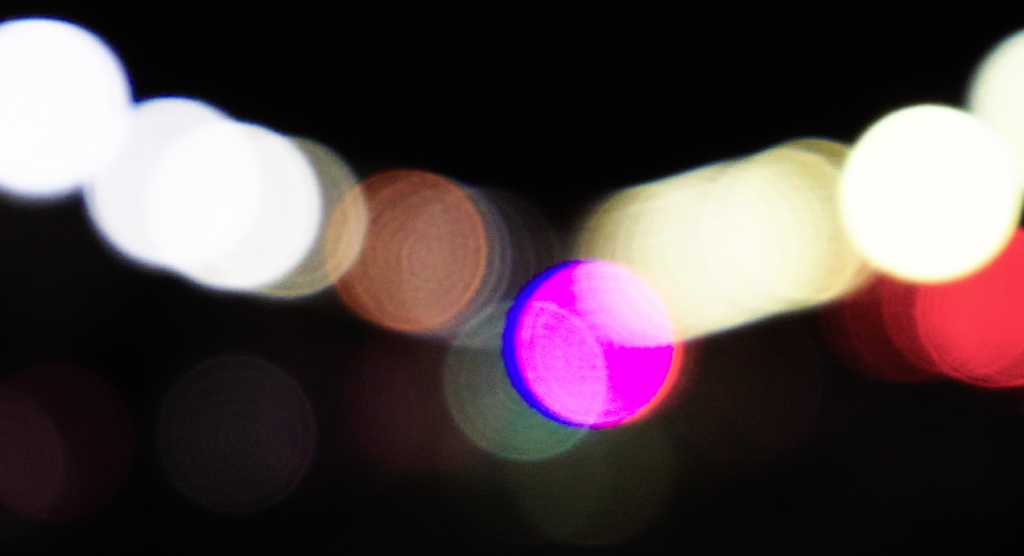
In the 1920’s, a young Jewish man, Police Captain Jacob Kaminsky, was walking on patrol when he was subjected to an off the cuff racial slur alleging he should have a salami instead of a nightstick under his arm. Kaminsky’s response was to start a branch of the Shomrim Society of New York to help preserve and protect the Jewish identity within the police force. The Shomrim Society is still in affect today with affiliates across the country.
The Crown Heights Shomrim, who created their group after alleged ineffective policing in their neighborhood, credit an ancient group called the Maccabees for their lineal formational roots. Maccabee means “the hammer,” and the Maccabees were a group of Jewish rebel warriors in the Seleucid Empire who rose up against the king of Seleucid after he tried to eradicate them because of their religious beliefs.
In Williamsburg, the Shomrim began in the late 1970’s over more than a racial slur about hard salami or ancient affairs. When a local Rabbi, Moshe Hoffman, discovered a man lying in a pool of blood after being attacked on the street, the Rabbi was spurred to action. He spoke to his congregation the next morning, and with the aid of his community, he began a new branch of the Shomrim. Other groups, not affiliated, separately funded and each with their own methods and 24 hour hotlines, soon followed in other parts of Brooklyn.
“The Bakery Boys” were a group of young Jewish bakers who did late night deliveries throughout the Borough Park neighborhood. Borough Park was then experiencing higher crime. Racial tensions simmered between the Jewish and African American communities.
When Moshe Gutman, 53, a marketer from Borough Park was growing up, he said “we didn’t have a ‘if you see something say something policy,’ we had ‘if you see something CHAPTZEM!”
If you see something CHAPTZEM!”
Yelling “Chaptzem” was a siren call to help and meant that “you jumped out of the house and gave chase when someone had knocked a hat off or pulled a purse away” from an Orthodox person, Gutman said.
The neighborhoods have changed since the Bakery Boys heyday. Today, though, there is still trouble, and the point-to-point radios still chatter.
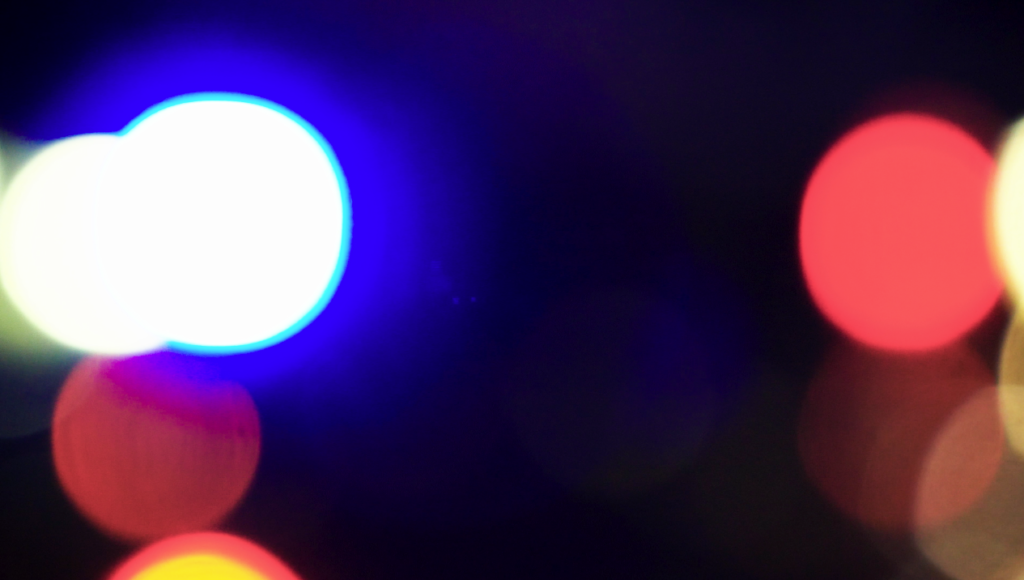
In 2013, Taj Patterson, a young black teenager walking through the Williamsburg neighborhood, testified that he was attacked by a group of Hasidic men, including, allegedly, members of the neighborhood watch group. The group mistakenly believed Patterson was vandalizing cars on the evening of the attack and a fight ensued. Patterson was brutally beaten and lost an eye in the altercation.
A 911 audio recording from a woman who witnessed the attack reported seeing “like 20 Jewish men and 1 black kid” in the assault and that “traffic had even been stopped.”
Ultimately, the charges were dropped because of a lack of evidence over conflicting accounts of the incident and the victim’s inability to identify his attackers. In court, Patterson’s legal team argued that “the political power of the Orthodox Jewish community, which established the patrol, allowed the patrol to operate outside the law with impunity.”
The “political power” and “NYPD favors” allegations have been brought up in mainstream media, and in the courts, when trying to understand how this private community patrol group operates.
Alec Lichtenstein, a former Shomrim supervisor, was convicted on federal bribery and conspiracy charges in 2016 and worked with corrupt NYPD officers to illegally sell gun permits.
This case was part of a scandal that included top commanders like Deputy Chief Eric Rodriguez, the former commander of the 68th Precinct in Bay Ridge, and Deputy Inspector James Grant, of the 72nd Precinct in Sunset Park.
Lichtenstein was sentenced to 32 months in prison. Some thought this sentence was too lenient, after the judge took his work with the Shomrim as a “community service into consideration when imposing the prison term.”
This is part of their psychological orbit. That there are insiders and outsiders.”
“This is part of their psychological orbit. That there are insiders and outsiders,” says Michael Lesher, a Orthodox Jewish journalist and attorney who represented multiple children and their families in sexual abuse allegations against a Brooklyn rabbi who is currently a fugitive hiding in Israel.
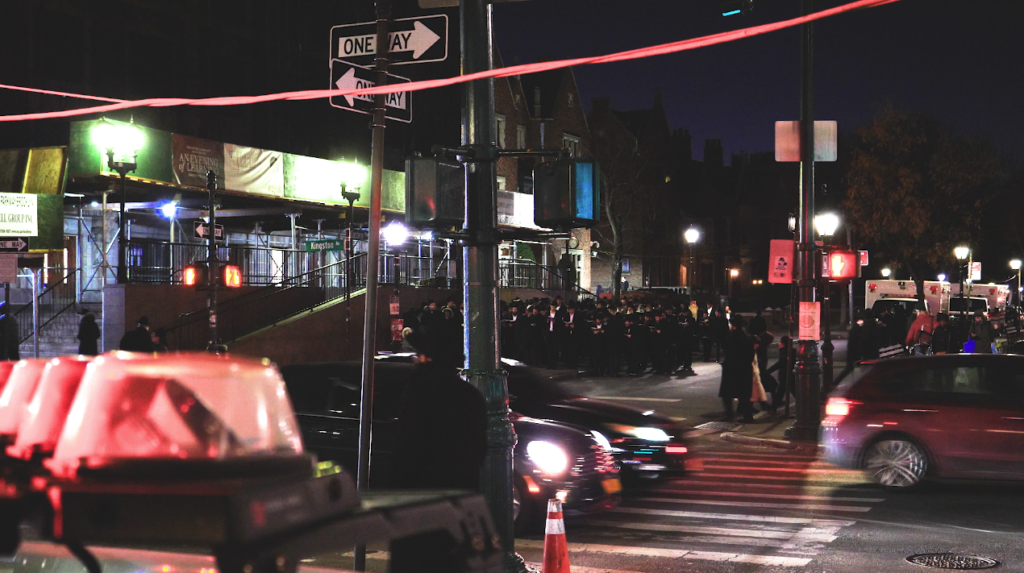
770 Eastern Parkway during Shabbat.
“When you watch any institution, the more answerable they are, the better they work internally.”
Lesher, a member of the Orthodox Jewish community “by choice,” insists that the nature and makeup of these communities must be taken into account when trying to understand an institution like the Shomrim. As a whole, the Jewish community has many institutions covering many areas of social services for their community and the Shomrim is only one facet.
While the Shomrim are not responsible for the alleged sexual abuse actions of this particular rabbi, the “nature of the problem is silence,” according to Lesher. Lesher argues that there is a practice of keeping things hidden from the NYPD when it comes to certain crimes within the community.
Not all members of the community share Lesher’s perspective.
“I think a lot of this misperception comes because of how we are covered,” says Rabbi Motti Seligson, director of media relations at the Chabad Lubavitch, also known as “770,” in Crown Heights.
Seligson’s office is at 770 Eastern Parkway. Located in Crown Heights, the site of the headquarters for the Chabad Lubavitch is on the main thoroughfare through a tree-lined and brownstone-filled section of Crown Heights.
Seligson is dismissive of the idea that “the community has to speak up for itself” to not be mistakenly labeled outside their community with “misnomers by journalists” like Lesher. Seligson also softens his stance, acknowledging that “when the community gets attacked from the outside, especially this community, they hunker down.”
However, the Shomrim have been accused of not always working cooperatively with the NYPD.
A high profile example came from the three hour delay to call the NYPD when 8-year-old Leiby Kletzky vanished on his way home from day camp on a street in the Hasidic section of Borough Park.
The Shomrim helped organize a search party that was estimated at 5,000 members of the Orthodox Jewish community. Kletzky had been dismembered by a troubled member of the community and this event was what many in the Borough Park community considered to be “their 9/11.” While the Shomrim helped substantially in the search effort, their decision to delay bringing in the NYPD immediately brought controversy to the organization.
While the Flatbush Shomrim field over 4,000 calls to their hotline a year and help facilitate over 200 arrests, consisting of mostly package thefts and car break ins, Bob Moskowitz, the senior coordinator of the Flatbush Shomrim, admits that some members of the Jewish community would rather call Shomrim before they call the NYPD. Especially, he says, when dealing “with domestics” – issues involving domestic violence within families in their private homes.
Even though the Flatbush Shomrim send their volunteers to police academy training programs, they are not substitutes for the NYPD. While people in the community might turn to Moskowitz and company before going to the NYPD, Moskowitz is adamant against any misconceptions about the Shomrim’s authority.
For domestic violence related calls where it could be “spousal, husband, wife, it could be with kids, kids at risk, kids beating on parents,” Moskowitz and a trained team specifically prepared for these types of calls will respond as long as there are no signs of a violent situation.
“Obviously if we get there and it’s violent, immediately 911 is being called, or, if we see that there’s a potential for violence after we leave, it’s 911. 100 percent it’s our protocol,” Moskowitz said, “You cannot leave a situation like that without calling the police department because if in a half hour later it turns out that somebody stabbed the husband, stabbed the wife or vice versa, and the cops come and ‘Oh, Shomrim was here’.”
Moskowitz’s team ranges in ages from 20 to 65. When it comes to certain crimes committed in the community, Moskowitz and his team’s “greatest weapon is their finger” and these calls have 911 on the receiving end.
Like Moskowitz with his branch of Shomrim training protocols, Rabbi Motti Seligson is quick to point out the educational programs rolled out in the Crown Heights schools and synagogues to make the community better aware of how to report on domestic violence and sexual abuse. These protocols, they hope, might combat situations where certain crimes go unreported to the NYPD.
“We are civilians. We’re not the police department. This is where patrols can get into trouble,” Moskowitz said.
The problem is when they forget who they are. We know exactly who we are. Please appreciate that. Know your place and just be eyes and ears and everything will work out just fine.”
Muslim Patrol
Victor Bonini
In Face Of Recent Bias Attacks, This Arab Community Remains Resilient
by Victor Bonini
BAY RIDGE—That Saturday in October was never meant to be anything more than just an ordinary day of shopping.
In the afternoon, Mido Mourad, a journalist, went with his wife to a T.J. Maxx store located on Fifth Avenue, to buy clothes for their kids.
They were standing in front of the cashier, deciding whether to leave or not, when another customer walked up to them and started screaming.
“Go back to your country,” said the woman, while pointing at the hijab Mourad’s wife was wearing. Neither of them replied. “I felt like I was in that nightmare where you see the beast attack and you can’t move,” he wrote in Arabic in his Facebook page describing the incident.
Mourad also said that none of the store’s employees came to help.
I felt like I was in that nightmare where you see the beast attack and you can’t move.”
The couple left the store and was outside when the woman came back. This time, Mourad filmed the scene with his phone. The attacker exited the place showing him the middle finger and hit him, which made his phone shake in his hand.
“Hold this, Imma hit him,” she said, giving her shopping bag to another woman accompanying her. “Imma hit him,” she repeated.
The second shock of the day came hours after this, when, according to Mourad, the police officers he called refused to register the October 19th incident as a hate crime. They said it is classified as a harassment violation.
“True racism in New York these days has become unbearable and we are all targets,” wrote Mourad in the end of the Facebook post. He didn’t want to comment any further.
In a statement, T.J. Maxx said that the store’s employees “were not nearby during the initial verbal exchange between our two customers nor did they observe the altercation near our entrance.” They said they will send their store video to the NYPD investigation and they do not “condone the comment another customer made to Mr. Mourad and his wife.”
Bias Attack as a Trauma
According to the NYPD, in the first nine months of 2019, police officers registered 15 hate crime attacks against people identified as Arabs or Muslims, which resulted in 15 offenders arrested. In 2018, there were 18 victims and 10 arrests, and in 2017, 32 victims and 22 arrests.
The NYPD defines hate crimes as “motivated in whole or substantial part by a person’s, a group’s or a place’s identification with a particular race, religion, ethnicity, gender, age, disability, ancestry, national origin or sexual orientation.”
The numbers of hate crime against Muslims or Arabs are small compared to other groups—there were 166 complaints of anti-Jewish attacks in the first nine months of 2019, which led to 45 arrests.
What some victims of the community say is that a lot of the attacks are misreported or not reported at all, either because the victim does not present a complaint or because the bias is in subtle actions of everyday life.
It is the case of Fatima, a Muslim woman who does not want to be identified. In her words, “some of the tensest moments of discrimination” in her life in the U.S. would not be classified as a hate crime.
Fatima was 38 years old when she ran away from poverty in Morocco and settled in Brooklyn, in 2002, with the hope of getting a green card and a marriage.
She did get a green card in the following years, but all of her three attempted marriages failed. She decided to live alone and work as a cook, which she did for 11 years. But then an injury in her spine made her unable to work.
Since then, the Supplemental Nutrition Assistance Program (SNAP) has been providing her the food she needs. But without income, she could not afford the rent.
Fatima went to live on the streets for some days—something she never told her family in Morocco, and the reason why she does not want her name to be published—and then got a place in a city shelter on Liberty Avenue, in Queens.
That was when the bias attacks started, she claimed. “The other people at the shelter were very mean. They would make fun of my clothes, kick my bed to wake me up, throw the bread away after I touched it to get a piece for myself,” she said.
She moved to another shelter—this one in Far Rockaway. But the incidents continued. “One of my roommates started making fun of me because I prayed five times a day. Once she asked: ‘Why don’t you pray all the five times at once?’ She would even interrupt me.”
“They never treated me well and I think it’s because I’m different from them,” Fatima said.
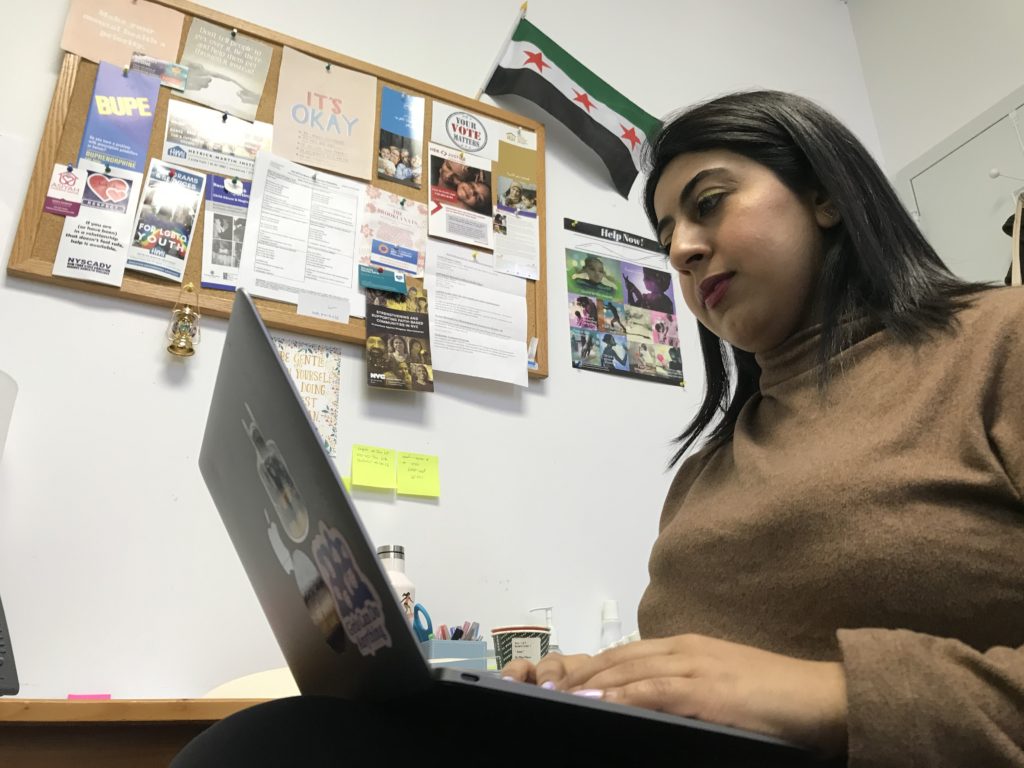
When Nouf Aldahmani started at the AAANY, she had no clients. Now, she has enough to fill her entire weekly schedule.
“It’s a traumatic experience and it should be treated this way,” said Nouf Aldahmani, a social worker at the Arab American Association of New York (AAANY), in Bay Ridge, and attends patients that are, in their majority, Arabs.
The AAANY was created in December of 2001—following the 9/11 attacks—to fight discrimination against Muslims and give them social aid. This in a moment when this community was facing increasing scrutiny.
For more than a decade after the terrorist attacks, the NYPD had a surveillance program to investigate Muslim communities without justification, eavesdropping on their conversations, taking pictures and writing reports on their daily routines.
The practice—revealed in 2011 by the Associated Press in a series of stories—led to lawsuits against the NYPD. The last one was settled in 2018.
Nowadays, the AAANY offers free services to anyone who enters the building at Fifth Avenue seeking help. They work in five departments: adult education, advocacy and civic engagement, social services, youth development and mental health services.
For almost three years, Aldahmani has been working in the latter. Fatima is one of her clients. “Now, I come here every week. Miss Nouf is like a daughter to me,” said Fatima. “All of them here are my family.”
For Aldahmani, cases of trauma, like Fatima’s, or of hate attacks, like Mourad’s, must be treated with talk. And not only these cases. “I think a lot of people should come to therapy as well,” she said. She is constantly speaking with local families to bring them to her office.
This presents a challenge. Aldahmani feels there is a bias against therapy in the Arab community.
“It’s normal for Muslims to relate everything to religion. Like, if you’re having issues, or you’re feeling depressed or you don’t want to live anymore, it’s probably related to religion. Maybe you’re not so close to God. Maybe you’re doing something and God is punishing you.”
But her efforts are yielding results. Since the program started, in February 2017, 50 people have entered the AAANY as new patients. The majority of them have anxiety issues, depression or post-traumatic stress disorder due to previous experiences. “Some of them ran away from wars in their home countries.”
“I think it’s a huge gap just to bring people out of that shadow they are living in,” Aldahmani said. “It’s okay not to feel okay, and just come and seek treatment.”
Integration Means Safety
As soon as the AAANY opened its doors at 10 a.m., on a Monday morning, a diverse group of people entered the place looking for different services. Among them was a Hispanic couple asking for help with paperwork. They were received by a lawyer in a room beyond the counter.
“It’s always busy here,” said Samie Alyameni, the immigration program coordinator, in the office next door. She then started remembering some of the cases she defended. “I’m really proud of a Jamaican immigrant we represented here who was seeking asylum in the country because he was a victim of homophobia back home. We won,” she said, smiling.
Still, two thirds of her clients are Arabs—who, in her view, benefit both from the free bureaucratic service and the diversity of the association. “Integrating the people into the community also means keeping them safe,” said Alyameni.
As responsible for immigration processes—the most wanted service in the organization—she estimates her team receives around 60 new cases every week, and 20 of them become follow-up proceedings.
It’s the case with Forida Chowdhury, a housekeeper who came from Bangladesh in 2016 and is applying for two processes: a renewal for her two-year green card, and an American citizenship. Her husband, who has been living here for 40 years, is already a citizen.
“Safety on the streets was never an issue for her,” said Nadira Begum, Chowhury’s niece, who accompanied her in the meeting. “But she doesn’t want any problem with the authorities, so she is applying for the two procedures with all the help she can get so she can have her documents just right.”
Integrating the people into the community also means keeping them safe.”
The Egyptian and Uber driver Alaa Mohamed is expecting a great deal of bureaucratic procedures ahead of his case. The father of two has been living in the U.S. for 23 years and got his green card in 2018, but there’s an issue with his birth date: the one printed on the card does not match the one on his birth certificate.
“I came here and scheduled an appointment with the lawyer,” he said. Mohamed doesn’t know what to do in a case like this, and does not want to guess how long it will take to fix the problem. “But the association here helped me through the process of getting my Green Card, so I trust they will do all they can to help.”
Complex cases like this one are the specialty of Alyameni. In a process such as the one she faced with her Jamaican client, she said it is never easy to predict the results. They learn from every case.
But no other moment has been harder for her than President Donald Trump’s travel ban—a policy that went into full effect in December 2017 and denied entry for Syrian refugees and travelers from Iran, Iraq, Libya, Somalia, Sudan and Yemen (all Muslim-majority countries), as well as Venezuela and North Korea. The policy was unofficially called the Muslim Ban.
On January 27, 2017, when Trump signed the first version of the ban, Alyameni remembers being “heartbroken”. “At that time, I used to see at least one person crying in the office every single day. I thought to myself: ‘Do I want to continue?’”
She did. And she was part of the team that restructured the organization in order to help more people. “We created more departments and had attorneys come in here to answer clients’ questions about how the ban would affect them and what they could do,” she said.
They also joined protests, marches and organized events to educate the people. The idea was to make things easier for them. For a lot of immigrants, it was the beginning of a closer relationship with the AAANY—and with the community itself.
At that time, I used to see at least one person crying in the office every single day. I thought to myself: ‘Do I want to continue?’”
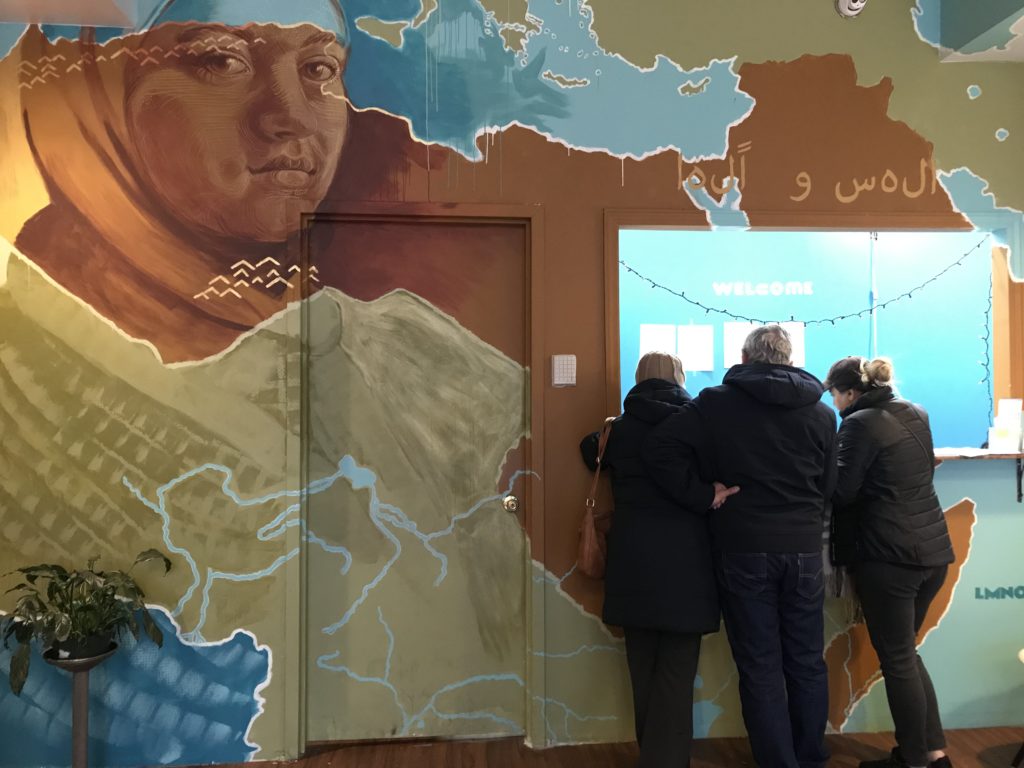
Busy counter: people from all over New York visit the AAANY—sometimes, even residents from other cities
Female Leadership
“When we arrived here from Jordan, in 1990, my family was one of the first Arab families in the neighborhood. And I’ll never forget how hard it was,” said Manal Abusamaha.
Originally from Palestine, the mother of three said one of her biggest accomplishments was raising her kids in the U.S.—now they are all grownups. And back in her time, there was no association to help.
“When you arrive here, you still don’t have the tools to solve your problems. You don’t know your rights, you don’t know the laws, the language. You feel very lonely, frustrated and depressed.”
But the toughest moment of her life here came after the 9/11 attacks. In 2008, the U.S. government deported her husband, to the family’s surprise. Eleven years after the deportation, he has still not been accepted back in the U.S.
But that is a subject Abusamaha prefers not to talk about. What she would rather do is show how these obstacles made her want to help others—she was working with a coat donation campaign group at AAANY when she stopped to talk. She has become the women empowerment organizer for the association.
“We have a group that meets weekly with around 20 to 30 women. Sometimes, depending on the topic we discuss, up to 50 show up,” said Abusamaha.
The goal is simple: integrate the women with talks about politics, social issues, American culture, parenting and security. When the Thanksgiving holiday was approaching, for example, they had a special meeting to explain it, and as the group organizers realized that drugs were becoming an issue in the neighborhood, they decided to address the subject.
There are also events especially for the female public. On the day before the coat donation, the women had gotten mammograms for free.
“These women take this information to their houses, their kids, and so they help their entire families engage in the society,” said Abusamaha. “We want to keep them safe in every aspect of their lives.”
“And at the same time, with the information, we encourage them to be leaders,” Abusamaha added. “That’s very important. We want to see more female leaders here at the association.”
Whose Streets? Their Streets!
Fiqah Rahman
Local Activists Fight for Safer Streets in Brooklyn
By Fiqah Rahman
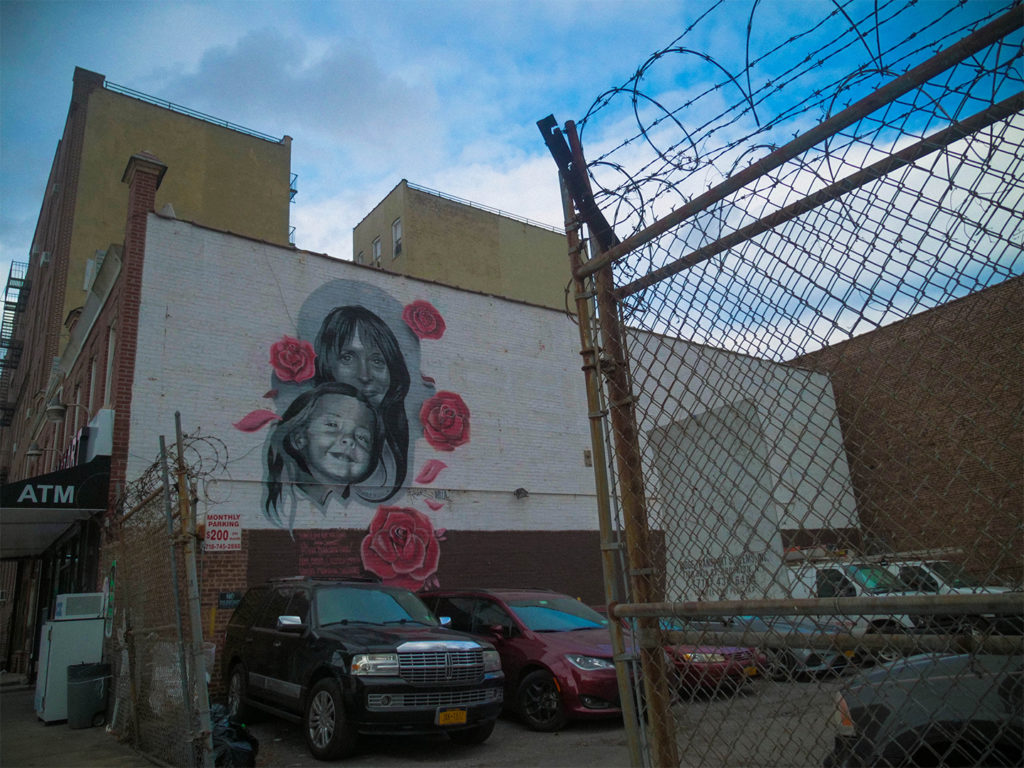
Mural of Donna Blanchard and Michelle on 92nd Street and Fort Hamilton
BAY RIDGE— Rush hour began on the intersection of 92nd Street and Fort Hamilton Parkway, and traffic was building up. A little girl rushed out of the school nearby and was excited to go home to play. She looked left and right and was about to jaywalk until she saw a mural of a mother and a daughter sitting on the wall across the street.
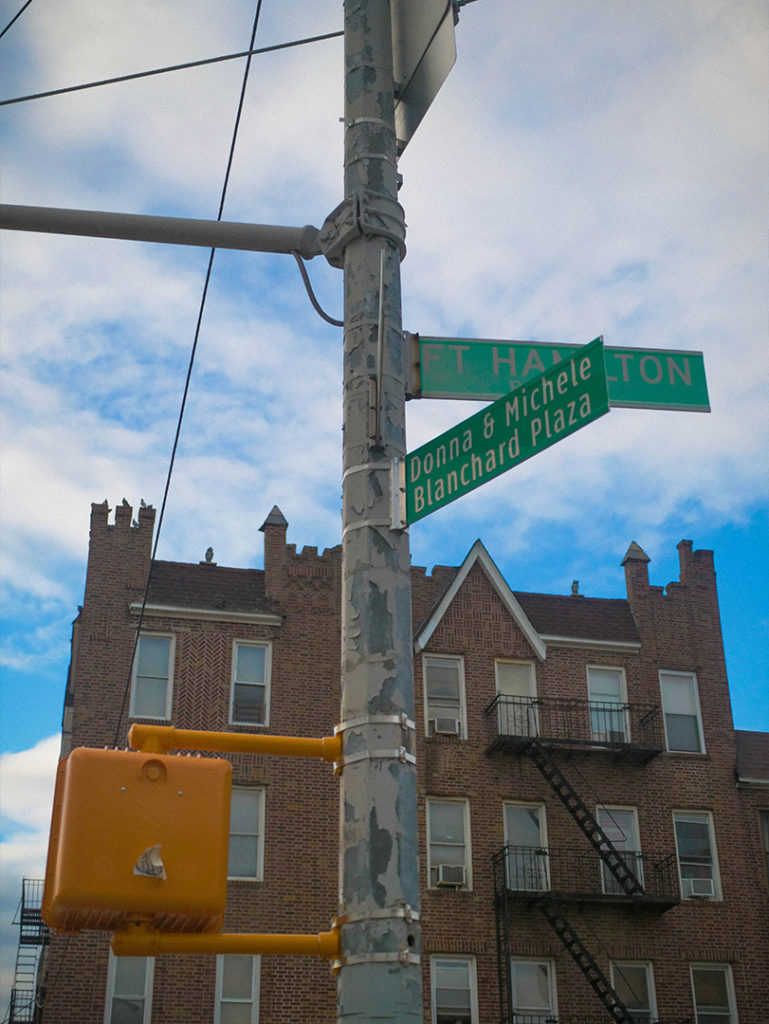
The girl stopped, waiting instead for the pedestrian light to change. The mural was a reminder of the tragic deaths of Donna Blanchard and her four-year-old daughter, Michele, who were killed by a reckless truck driver while crossing the street 25 years ago.
Across from the mural stood a 14-year-old, Leila Mullarkey. She saw the little girl stopping at the red light and she was relieved that the girl decided not to cross.
It’s so heartbreaking to see,” said Leila, staring into the picture of the mural on the wall.
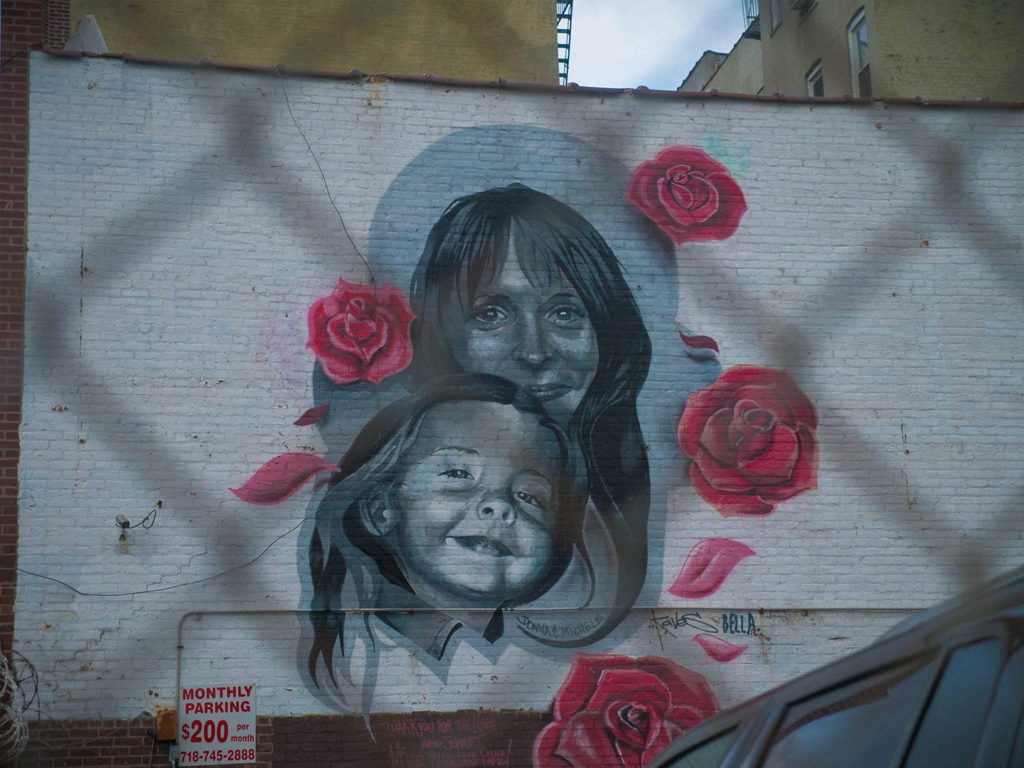
Leila passes by the intersection every now and then on her way home to 72nd Street. She’s always concerned about the safety of the streets because her brother and mother were once “unlucky yet lucky” victims of pedestrian accidents.
“It’s great that this mural brings attention to the issue but we shouldn’t have to paint images of people who died to remind them that it is an issue,” Leila said.
The No-Fault Insurance
On the corner of 4th Avenue and 78th Street, Maureen Mullarkey, Leila’s mother, was struck by a vehicle in 2009 while pushing her double stroller on the crosswalk on her way to pick up her children from preschool.
She sustained multiple injuries – a broken elbow and an injured jaw – and needed a dozen stitches. Her stroller was mangled and crushed. Fortunately, her children weren’t in the stroller at the time but the image of the stroller still haunts her to this day.
“I was in shock when it happened. I remember the driver was being defensive and told me that I came out of nowhere when obviously, I was in the crosswalk and I had the light,” Mullarkey said.
She emphasized that every time she told her story, people would not believe her and blamed her instead, saying that she “must have been jaywalking” but, in fact, she saw the lights, the “walking man” lit up, and then she looked left and right.
Disappointed that people dismissed her story, Mullarkey also faced another problem that day.
She wanted to use her own insurance to get covered for every injury she sustained but she wasn’t allowed to do so.
“If you’re hit by a car and there’s a no-fault insurance, you’re not allowed to use your own health insurance that you pay for. You’re supposed to use the driver’s insurance to cover for you and that’s not even enough to cover everything,” she said.
Hospital costs average around $3,500 per day and for a hospital stay, they can average $15,734, according to America’s Debt Organization,. Even if the insurer has excellent coverage that pays 80 percent of the bill, for major surgeries, the remaining charge can still be close to $100,000.
If the driver is underinsured, then the victims would have to pay for the remaining medical bills. New York State uses a no-fault insurance system—a type of insurance that stipulates no matter who was at fault in the accident, the drivers must use their own car insurance to cover the cost of the accident.
“I remember when Max [Mullarkey’s son] was hit by a car, the ambulance ride was $7000,” Mullarkey said.
Max broke his leg and had to go through several physiotherapies which on average can cost from $20 to $350 per session depending on whether the person involved is insured or not. In New York City, the basic coverage for a no-fault insurance is $25,000. At the time, the driver who struck Max had that coverage. The family had to cover the rest of the cost.
Luckily, Max didn’t have to stay in the hospital for that long.
The Rise of Fatalities in Southern Brooklyn
Pedestrian injuries and fatalities continue to be a major issue in New York City. Year-to-date, pedestrian fatalities have ticked up from 204 to 210 from 2018, despite city efforts to reduce their number to zero.
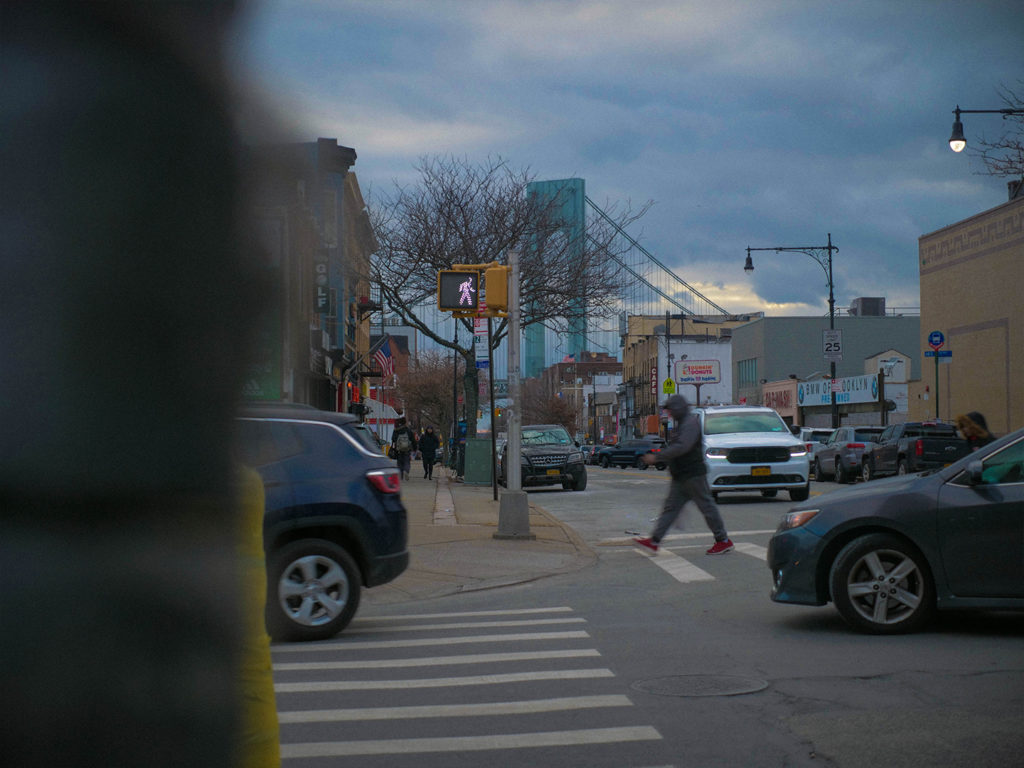
A man jaywalking during rush hour traffic in Bay Ridge.
The NYC Crash Mapper – an interactive map that uses statistics from NYPD crash reports– shows 103 pedestrians killed this year and 28 of them were cyclists. Nine of the cyclists were killed in Southern Brooklyn.
“It’s a big concern of what’s happening in our streets,” said State Senator Andrew Gounardes, a Brooklyn Democrat.
Gounardes is the State Senator for the 22nd State district, which covers much of Southern Brooklyn. Elected in November 2018, he campaigned extensively on making streets safer for pedestrians, which aligns with Mayor Bill de Blasio’s Vision Zero plan.
The plan, which hopes to end all traffic-related deaths by 2024, targets dangerous intersections and corridors for redesigns, adding speed cameras and lowering speed limits on city streets.
Senator Gounardes was an active member of B.R.A.K.E.S, short for Bay Ridge Advocates Keeping Everyone Safe. He along with other B.R.A.K.E.S members successfully pressed the City Council to install more “life-saving speed cameras” around Southern Brooklyn.
B.R.A.K.E.S is an initiative Maureen Mullarkey started, that helped spur traffic calming measures on 4th Avenue between 69th and 86th Streets.
Leading Pedestrian Intervals (LPI) were installed along the avenue which give pedestrians a three to seven second “head start” to cross the street when entering an intersection before any car can move. B.R.A.K.E.S fought for the “bulb out” extensions along the street as well. A bulb out is a corner of a sidewalk extended further out into the parking lane, giving more visibility for pedestrians to look out for cars and vice versa. Also, because of this, drivers have to make wider turns, meaning no more sharp turns made that could endanger pedestrians waiting on the edge of the sidewalk.
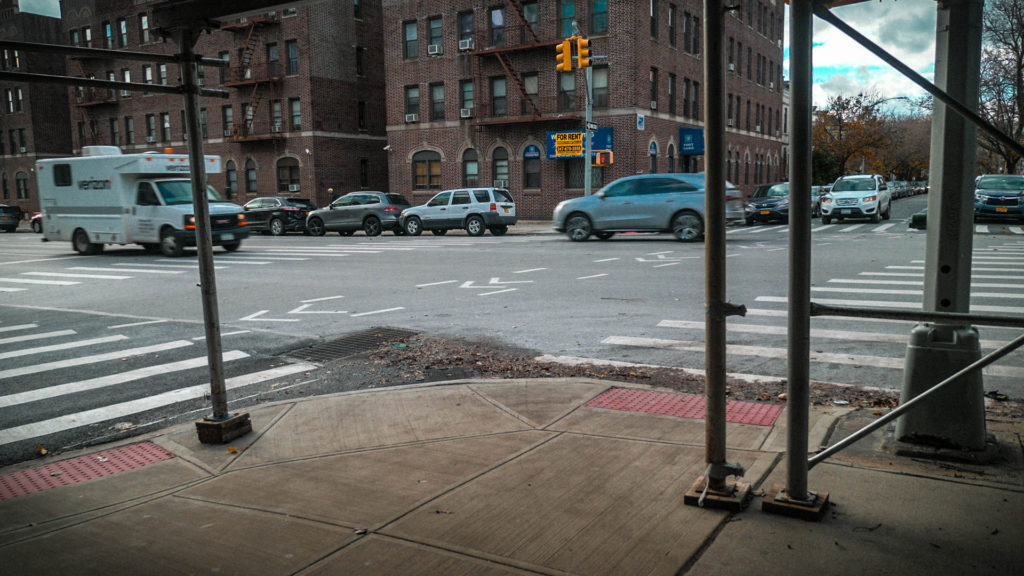
Installation of a bulb-out on 4th Avenue.
Traffic Violence is an epidemic that I don’t think we take seriously enough,” said Gounardes. “It’s a culture change which everyone must fight against.”
Although there has been progress made on street safety, the senator has not declared victory just yet.
“There’s still a lot more to do. At the end of the day, my goal is that no parent, senior or pedestrian of any age should live in fear of crossing the street,” Gounardes said.